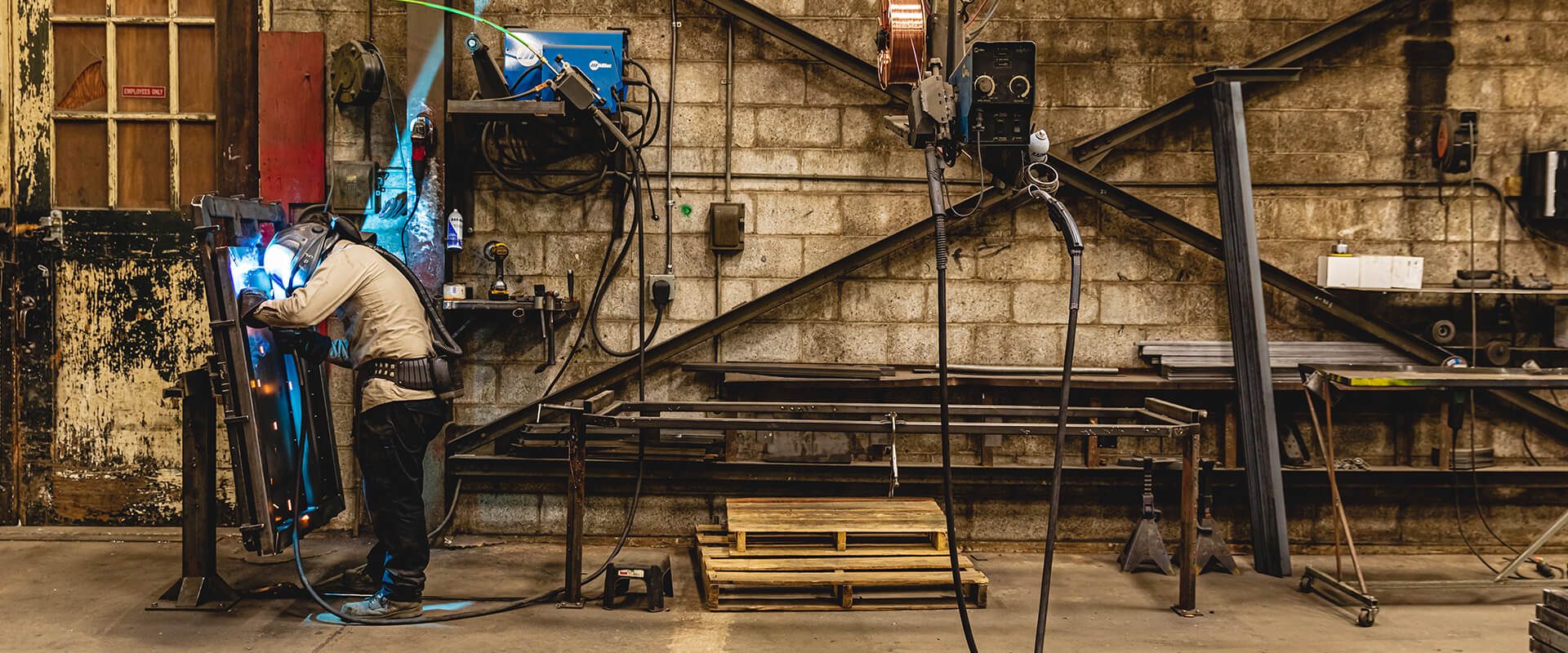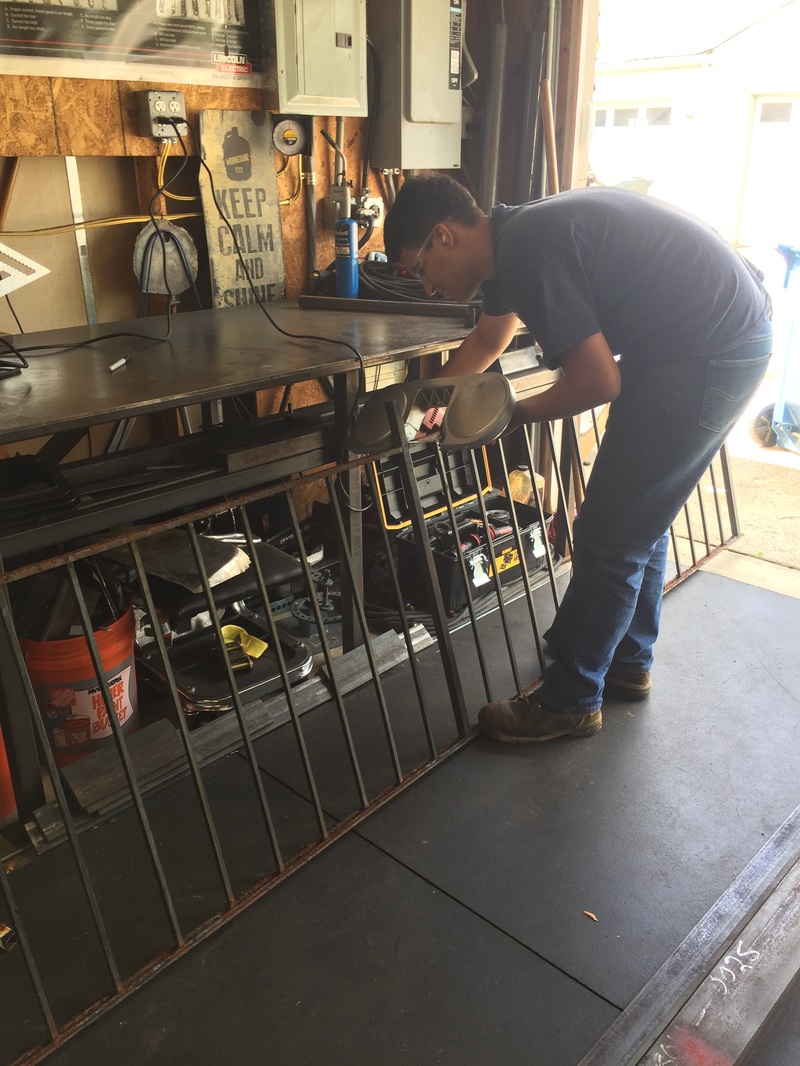All About Welding: Trick Insights Into Techniques and Best Practices for Success
Welding encompasses a range of techniques, each matched for certain materials and applications. Understanding these techniques, such as GMAW, SMAW, and TIG, is necessary for accomplishing ideal outcomes. In addition, the best devices and security methods can not be overlooked. As preparation and repairing play vital duties in the welding procedure, understanding these aspects can greatly improve the top quality of the end product. What are the key aspects that assure a successful weld?
Recognizing Different Welding Methods
Welding strategies include a selection of approaches, each suited to particular applications and materials. Among one of the most usual strategies are Gas Steel Arc Welding (GMAW), Shielded Metal Arc Welding (SMAW), and Tungsten Inert Gas Welding (TIG) GMAW, additionally referred to as MIG welding, is preferred for its rate and versatility, making it excellent for thin materials. SMAW, or stick welding, is favored for its simplicity and efficiency in outdoor atmospheres, specifically with thicker steels. TIG welding supplies precision and control, making it suitable for intricate work and non-ferrous metals (Montana Mobile Welding and Repair Fabrication). Each method has its special advantages and considerations, enabling welders to choose the finest method based on the project's demands, material type, and preferred outcomes. Comprehending these strategies is vital for effective welding
Vital Welding Devices and Tools
While numerous welding techniques require particular skills, the appropriate equipment and tools are similarly crucial for achieving quality outcomes. Important welding devices includes welding machines, which differ depending on the strategy-- such as MIG, TIG, or stick welding. Protective equipment, including gloves, headgears, and aprons, assurances safety and security and comfort throughout the procedure. In addition, fixtures and clamps help secure products in position, making certain precision in welds. Consumables like welding poles, wire, and securing gas are also vital parts that influence the high quality of the weld. Furthermore, devices such as cutters and grinders assist in surface area preparation and post-weld ending up, adding to a professional outcome. Buying high-quality devices ultimately enhances the efficiency and efficiency of welding jobs.
Safety And Security Practices in Welding
Proper safety methods are essential in the welding market to safeguard employees from possible threats. Welders must wear ideal personal safety devices (PPE), including safety helmets with appropriate shading, gloves, and flame-resistant apparel. Adequate air flow is vital to reduce direct exposure to hazardous fumes and gases generated throughout the welding process. In addition, employees must be educated in the proper handling of welding tools to avoid crashes. Fire precaution, such as maintaining combustible materials away from the welding area and having fire extinguishers easily available, are necessary. Regular evaluations of devices and work spaces can help identify potential risks before they result in crashes. By adhering to these safety and security techniques, welders can create a more secure working setting and decrease threats linked with their trade.
Readying Materials for Welding
Preparing products for welding is a crucial action that significantly influences the high quality and integrity of the last product (Montana Mobile Welding and Repair Belgrade). Correct preparation includes cleaning the surface areas to get rid of impurities such as dirt, rust, and oil, which can jeopardize the weld. Strategies such as grinding, fining sand, or utilizing solvents are commonly utilized to achieve a tidy surface. Additionally, making certain that the materials fit together well is necessary; voids can result in weak welds. It's additionally crucial to consider the alignment and positioning of the components, as this will certainly influence the convenience of welding and the final outcome. Lastly, choosing the ideal filler material and ensuring compatibility with the base metals is crucial for achieving strong, long lasting welds
Tips for Getting High-Quality Welds
Accomplishing top notch welds calls for attention to detail and adherence to ideal techniques throughout the welding procedure. Correct joint preparation is crucial, guaranteeing surfaces are complimentary and clean from contaminants. Picking the suitable filler material and welding technique based upon the base metals is essential for suitable bonding. Preserving constant travel rate and angle while welding can promote and avoid flaws uniformity. Additionally, regulating warm input is important; too much warm can lead to bending and deteriorated joints. If necessary, routinely examining the welds throughout the procedure enables for immediate modifications. Finally, utilizing proper post-weld treatments, such as cleaning and stress relief, can improve the sturdiness and stability of the weld, inevitably ensuring a successful result.
Repairing Usual Welding Issues
Welding often offers difficulties that can affect the quality and honesty of the last product. Usual issues such as porosity, inconsistent weld beads, and overheating can arise, each needing details repairing strategies. Comprehending these problems is necessary for welders to boost their skills and accomplish ideal outcomes.
Porosity Problems Explained
Porosity can frequently be forgotten, it continues to be an essential concern in welding that can endanger the stability of a completed product. Porosity refers to the existence of small gas pockets within the weld bead, which can lead and deteriorate the joint to early failing. This problem normally develops from contaminants, get more info wetness, or inappropriate protecting gas insurance coverage during the welding process. To mitigate porosity, welders should verify that the base products are dry and clean, make use of appropriate securing gases, and keep constant welding specifications. Regularly examining the tools and setting can additionally help recognize potential issues before they manifest in the weld. Dealing with porosity successfully is vital for achieving strong, sturdy welds that satisfy top quality requirements.

Inconsistent Weld Beads
Irregular weld grains can greatly affect the top quality and strength of a finished item. Numerous elements add to this problem, including improper traveling rate, wrong amperage setups, and inconsistent electrode angles. When the welder relocates also rapidly, a bead may appear slim and lack infiltration, while relocating as well gradually can create extreme build-up. In addition, making use of the incorrect amperage can result in either damaging or excessive spatter, both of which compromise weld stability. The welder's method, such as irregular torch movement, can also bring about unequal grain appearance. To reduce these issues, welders need to focus on keeping consistent, regulated activities and guaranteeing appropriate tools setups to accomplish harmony in their welds. Uniformity is essential to attaining trusted and solid welds.
Overheating and Bending Issues
Extreme heat throughout the welding process can result in significant overheating and contorting issues, influencing the structural stability of the work surface. These issues often manifest as distortion, which can compromise placement and fit-up, making more assembly challenging. Aspects adding to overheating consist of the selection of welding parameters, such as voltage and take a trip speed, as well as the kind of product being bonded. To minimize these problems, welders ought to preserve constant traveling rate and appropriate warmth input while checking the workpiece temperature level. In addition, pre-heating or post-weld heat therapy can help relieve anxieties created by quick cooling - Montana Mobile Welding and Repair Welding. Routine examination and adherence to finest techniques are crucial in avoiding overheating and making sure the long life and dependability of welded structures
Frequently Asked Questions
What Are the Job Opportunities in the Welding Market?
The welding sector offers diverse occupation opportunities, including settings as welders, instructors, engineers, and assessors. Experts can operate in manufacturing, building, aerospace, and automobile sectors, gaining from solid need and competitive wages in various functions.
How Can I Improve My Welding Rate Without Compromising Quality?
To enhance welding rate without sacrificing top quality, one need to practice efficient techniques, preserve devices, enhance settings, and improve hand-eye sychronisation. Routine training and seeking feedback can likewise significantly add to accomplishing much faster, high-quality welds.
What Accreditations Are Available for Welders?
Countless qualifications exist for welders, consisting of those from the American Welding Society (AWS), the National Facility for Construction Education And Learning and Study (NCCER), and numerous industry-specific organizations. These credentials boost employability and demonstrate skill effectiveness.
Exactly How Does Welding Influence the Properties of Metals?
Welding affects the properties of steels by modifying their microstructure, which can bring about changes in ductility, toughness, and firmness. Warmth input and air conditioning rates during the procedure substantially affect these material attributes.
Can I Weld Dissimilar Metals With Each Other?
